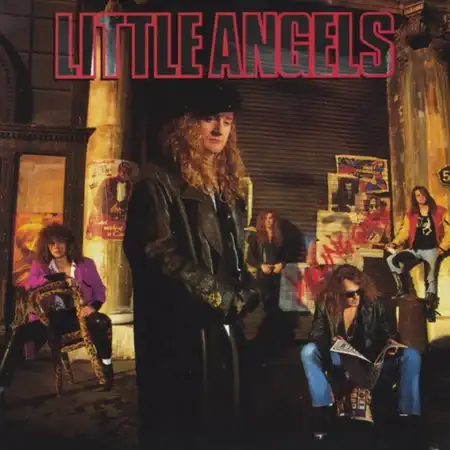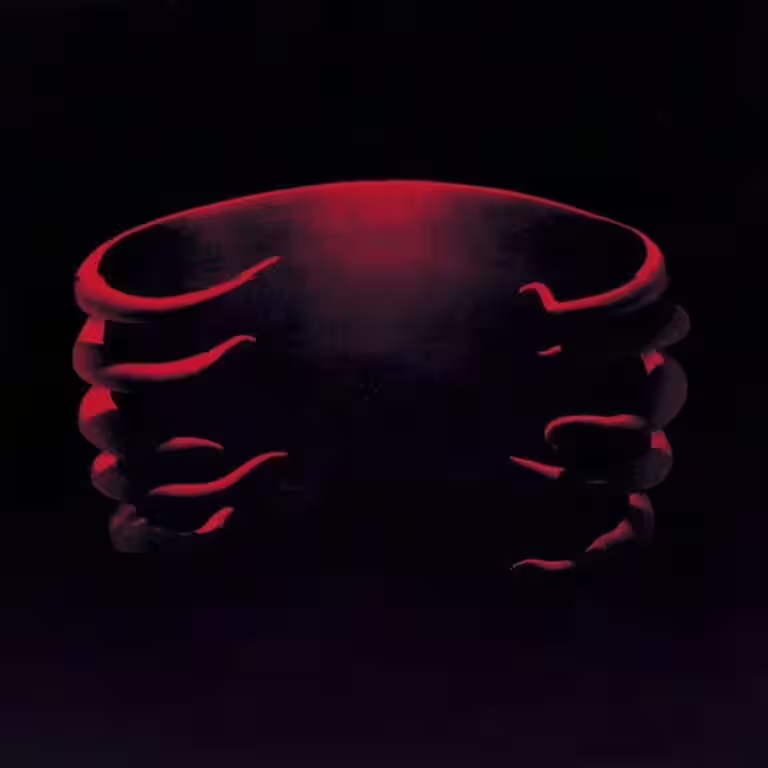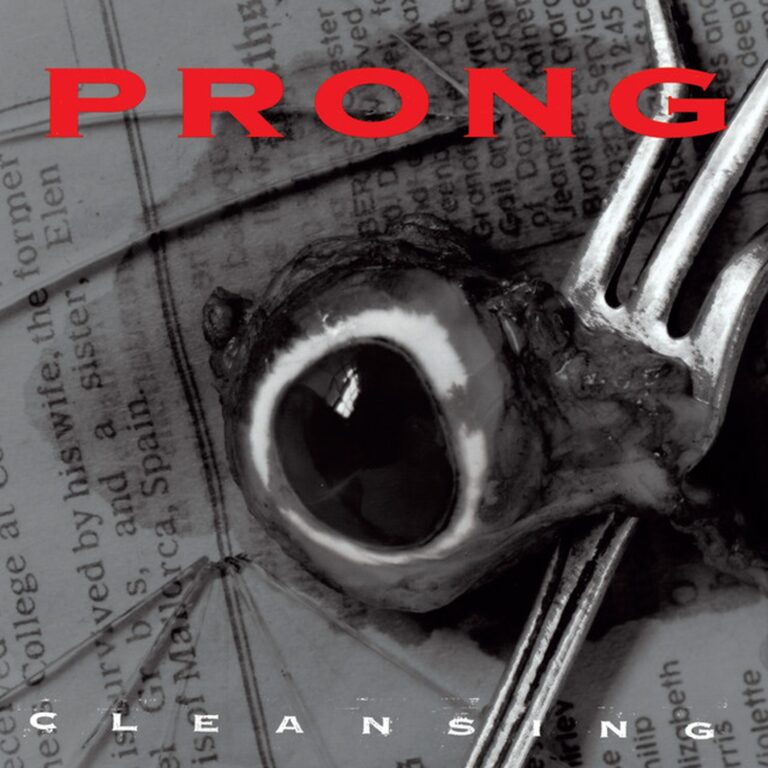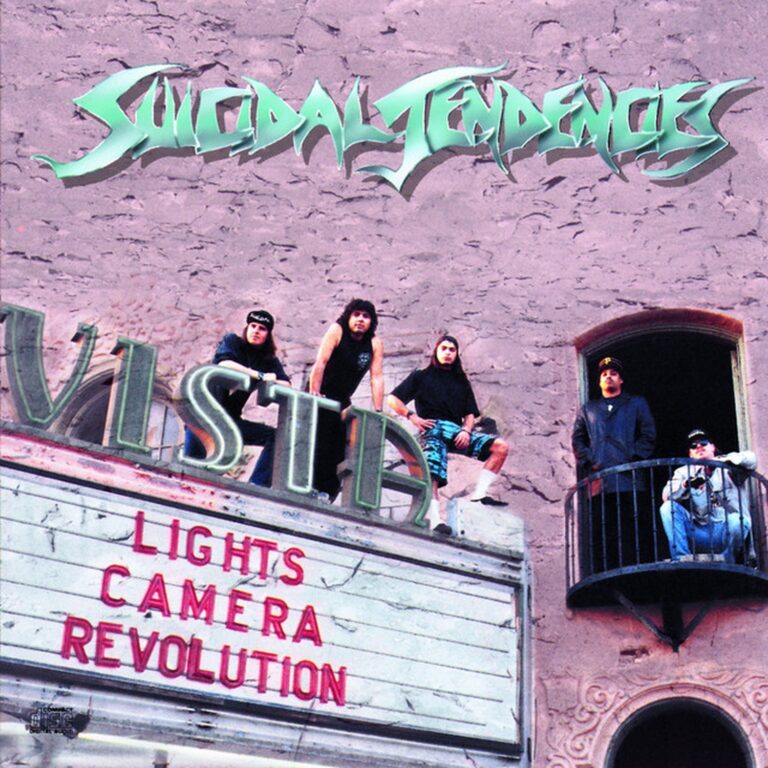
Young Gods by Little Angels: The Story Behind a Hard Rock Classic
Some albums seem to capture a moment, yet still sound fresh decades later. “Young Gods” by Little Angels is one of those rare records. Released in 1991, it marked a turning point for British hard rock, offering an energetic, melodic, and sometimes gritty take on a genre in transition. As we journey through the album’s creation, its context, and its enduring legacy, you’ll discover why “Young Gods” still commands respect among fans and musicians alike.
In this article, I’ll explore every aspect of “Young Gods”—from its origins and the environment that shaped it, to the detailed recording process, commercial reception, and the impact it left on the music world. Expect deep dives into the band’s evolution, track-by-track insights, stories from the road, and a look at how the album’s themes still resonate. I’ll also highlight five little-known facts and the album’s influence on both fans and other artists.
Before we go further, here’s a quick reference table with the key details about “Young Gods”:
| Attribute | Details |
|---|---|
| Release date | 1991 |
| Album title | Young Gods |
| Genre | Hard Rock |
| Total runtime | Approx. 54 minutes |
| Number of tracks | 13 (UK version) |
| Record label | Polydor |
| Recording studio | Fairview Studios, Willerby, Hull |
| Producer(s) | Steve Thompson, Michael Barbiero |
Upon its release, “Young Gods” reached number 17 on the UK Albums Chart, a testament to the band’s growing fanbase and the album’s appeal. Q Magazine described it as “finely produced and well-arranged.” The album’s impact was felt not only in the UK, but also among bands trying to break into the American market. As guitarist Bruce John Dickinson recalled, “We wanted to make a record that was big, bold, and said something about who we were. ‘Young Gods’ was that record.” Fellow musician Grant Kirkhope, who played trumpet on the album, called it “a moment when everything just clicked.”
Let’s begin by setting the scene that led to the creation of this influential record.
The Genesis of “Young Gods”
By the end of the 1980s, British hard rock was at a crossroads. Glam metal acts like Def Leppard and Bon Jovi dominated the airwaves, but there was a growing hunger for something more grounded. Little Angels, hailing from Scarborough, England, were perfectly placed to fill that gap. Formed in 1984, they had already made waves with their 1989 debut album “Don’t Prey for Me,” which earned them support slots with the likes of Van Halen and Bon Jovi.
Their early years saw the band go through several name changes—from Zeus to Mr Thrud, before settling on Little Angels during the recording of their 1987 mini-album “Too Posh to Mosh” at Fairview Studios. The original lineup featured Toby Jepson (vocals), Mark Plunkett (bass), Dave Hopper (drums), and brothers Bruce John Dickinson (guitar) and Jimmy Dickinson (keyboards). By 1988, Michael Lee had replaced Hopper on drums, bringing a fresh energy to the group.
After signing with Polydor Records in 1988, Little Angels were determined to build on their early success. The main creative force was frontman Toby Jepson, who handled most of the lyrics and melodies. Bruce John Dickinson’s guitar work and Jimmy Dickinson’s keyboards added depth, while Mark Plunkett and Michael Lee anchored the rhythm section. The Big Bad Horns—Dave Kemp (saxophone), Frank Mizen (trombone), and Grant Kirkhope (trumpet)—were frequent collaborators, giving the band’s sound a unique twist.
Below is a breakdown of the band’s lineup during the making of “Young Gods”:
| Band Member | Instrument(s) / Role |
|---|---|
| Toby Jepson | Lead vocals, rhythm guitar, main songwriter |
| Bruce John Dickinson | Lead guitar, backing vocals |
| Jimmy Dickinson | Keyboards, backing vocals |
| Mark Plunkett | Bass guitar, backing vocals |
| Michael Lee | Drums, percussion |
| The Big Bad Horns | Dave Kemp (sax), Frank Mizen (trombone), Grant Kirkhope (trumpet) |
Polydor Records financed the recording, allocating a budget that was substantial for a British hard rock band at the time. Recording at Fairview Studios kept costs in check, but the band still faced the pressure of delivering a breakthrough album. Financially, they had the support of their label, but as with many bands, there was always a sense that everything was riding on this release.
The album’s title, “Young Gods,” reflected the band’s ambitions. According to interviews, the phrase was meant to capture the feeling of youthful confidence and the sense that anything was possible. The cover artwork, designed by Charles Cutforth, featured a striking image of the band against a stark background, symbolising both their roots and their desire to reach new heights. The artwork, along with the band’s image, was carefully crafted to appeal to both rock fans and a wider audience.
As well as the music, the band’s attitude set them apart. They embraced their working-class background, often writing about the realities of everyday life. This honesty would become a defining feature of “Young Gods,” both in its lyrics and its sound.
Recording Process
Recording “Young Gods” was an ambitious undertaking. The sessions took place at Fairview Studios in Willerby, Hull, a facility known for its warm, analogue sound and its ability to accommodate both rock bands and orchestral arrangements. The studio had a reputation for being both accessible and professional, which suited Little Angels’ work ethic.
Producers Steve Thompson and Michael Barbiero brought a wealth of experience to the project. Thompson had previously worked with artists like Whitesnake, while Barbiero was best known for his work with Guns N’ Roses and Metallica. Their approach was hands-on, encouraging the band to push their boundaries. Recording engineer Mark O’Donogue handled much of the technical work, ensuring the sessions ran smoothly.
Here’s a table outlining the likely hardware and instruments used during the recording, based on the studio’s known inventory and period practices:
| Hardware / Instrument | Details / Usage |
|---|---|
| Mixing Desk | Likely a Neve or SSL analogue console, standard for UK studios in 1991 |
| Tape Machines | 2-inch 24-track tape, Studer or Otari |
| Microphones | Shure SM57/SM58 (vocals, guitars), AKG C414 (overheads), Neumann U87 (vocals, room) |
| Compressors | Urei 1176, dbx 160, LA-2A (vocals, drums, bass) |
| Guitars | Gibson Les Paul, Fender Stratocaster, Marshall and Mesa Boogie amps |
| Bass | Fender Precision or Jazz Bass, Ampeg SVT amp |
| Drums | Yamaha or Pearl kits, Zildjian cymbals |
| Keyboards | Roland D-50, Hammond B3 organ |
| Other | Horns (sax, trombone, trumpet), recorded live |
Much of this equipment was standard for British rock recordings at the time, and the band’s commitment to live takes helped capture the album’s energy. Anecdotes from the sessions reveal a mix of hard work and good humour. For example, Toby Jepson reportedly lost his voice during the final days of tracking, forcing the band to take a short break. The Big Bad Horns, meanwhile, added their parts in a single day—testament to their professionalism and the tight arrangements.
Both producers, Steve Thompson and Michael Barbiero, brought distinct skills to the table. Below is a table listing other albums produced by these producers that are covered in our existing content. Where we have written about an album, the name is linked for further reading:
| Producer | Artist | Album | Year |
|---|---|---|---|
| Michael Barbiero | Guns N’ Roses | Appetite for Destruction | 1987 |
| Michael Barbiero | Metallica | The Black Album | 1991 |
Recording at Fairview Studios meant the band had access to quality gear and a supportive environment. The studio’s staff, led by engineer John Spence, helped the band experiment with different sounds, especially when layering the horn sections. The band’s willingness to try new things—such as recording live horn parts and experimenting with guitar tones—helped give “Young Gods” its distinct character.
Commercial Performance and Reception
When “Young Gods” hit the shelves in 1991, it made an immediate impression. The album climbed to number 17 on the UK Albums Chart, a significant achievement for a British hard rock act competing with international heavyweights. The singles “Boneyard,” “Product of the Working Class,” “Young Gods,” and “I Ain’t Gonna Cry” all charted in the UK, with “I Ain’t Gonna Cry” reaching as high as number 26.
To provide a sense of where “Young Gods” sits in the band’s discography, here’s a table of Little Angels’ studio albums, including their UK chart positions:
| Album Title | Year | UK Chart Position |
|---|---|---|
| Don’t Prey for Me | 1989 | No. 42 |
| Young Gods | 1991 | No. 17 |
| Jam | 1993 | No. 1 |
| Too Posh to Mosh, Too Good to Last! | 1994 | No. 18 |
“Young Gods” was a clear step up from their debut, both commercially and artistically. While it didn’t reach the number one spot like “Jam” would in 1993, it solidified Little Angels’ reputation as one of the UK’s leading hard rock bands. The album received a Silver certification in the UK, reflecting sales in excess of 60,000 units.
In 1991, the rock and metal world saw a flood of landmark releases. Other notable albums from similar artists that year included:
“Young Gods” didn’t pick up major awards, but its singles and the band’s energetic live shows earned critical praise and a loyal following. The album’s influence can be seen in the wave of British hard rock bands that followed in its wake.
Elsewhere in heavy music during 1991, the scene was exploding. Metallica’s “Black Album” topped charts worldwide, Nirvana’s “Nevermind” sparked a grunge revolution, and albums like “Badmotorfinger” by Soundgarden and “Slave to the Grind” by Skid Row showed that hard rock was still a global force. British acts like Thunder were also making waves, as covered in our Backstreet Symphony feature. At the same time, bands like Sepultura were pushing the boundaries of metal, and The Almighty released “Soul Destruction,” another British hard rock highlight.
Track Analysis
Singles played a key role in spreading the word about “Young Gods.” The album produced four major singles: “Boneyard,” “Product of the Working Class,” “Young Gods,” and “I Ain’t Gonna Cry.” These tracks, all co-written by the band, received significant radio play and helped the album reach a wider audience. “Boneyard” peaked at number 33 in the UK, while “Young Gods” and “Product of the Working Class” both cracked the top 40. “I Ain’t Gonna Cry” became the band’s highest-charting single from the album, reaching number 26.
Below is a table listing every song on the album, including track length and writing credits. Singles are marked with a *.
| Track Name | Length | Writing Credit |
|---|---|---|
| Back Door Man | 5:00 | Little Angels |
| Boneyard* | 6:00 | Little Angels |
| Young Gods* | 9:00 | Little Angels |
| I Ain’t Gonna Cry* | 9:00 | Little Angels |
| The Wildside Of Life | 4:00 | Little Angels |
| Product Of The Working Class* | 7:00 | Little Angels |
| That’s My Kinda Life | 3:00 | Little Angels |
| Juvenile Offender | 4:00 | Little Angels |
| Love Is A Gun | 3:00 | Little Angels |
| Sweet Love Sedation | 3:00 | Little Angels |
| Smoke In My Eyes | 3:00 | Little Angels |
| Natural Born Fighter | 3:00 | Little Angels |
| Feels Like The World Has Come Undone | 3:00 | Little Angels |
Singles: “Boneyard,” “Young Gods,” “I Ain’t Gonna Cry,” and “Product Of The Working Class.” Chart positions: “Boneyard” UK No. 33, “Young Gods” UK No. 34, “I Ain’t Gonna Cry” UK No. 26, “Product Of The Working Class” UK No. 40.
Song Meaning and Lyrics
Lyrics and themes on “Young Gods” reflected the band’s roots and the realities of working-class life. The singles, in particular, stood out for their directness and energy. “Back Door Man” is a swaggering opener, while “Kicking Up Dust” (from the previous album, but often performed on the Young Gods tour) is a celebration of youthful rebellion. “Boneyard” deals with themes of mortality and the fleeting nature of fame, its title a reference to both graveyards and the music industry’s tendency to discard artists once their moment has passed.
The title track, “Young Gods,” is an anthem of self-belief. The lyrics urge listeners to “stand up, stand up” and seize their own destiny. The song’s driving riff and bold chorus make it a highlight, and it quickly became a live favourite. The line “We are the young gods, standing in the light” encapsulates the album’s message of hope and determination.
“Product of the Working Class” is perhaps the most autobiographical track. The lyrics—”I’m a product of the working class, and I’m proud of where I’m from”—reflect the band’s pride in their background and their refusal to compromise. This authenticity resonated with fans, many of whom saw themselves in the band’s story. The song’s punchy arrangement and singalong chorus helped it become a staple of the band’s live set.
Writing credits for all songs go to the band as a whole, with Toby Jepson often leading the process. The collaborative approach ensured that each track reflected the group’s collective experience. The Big Bad Horns added a distinctive flavour to several songs, most notably “Sweet Love Sedation” and “Smoke In My Eyes.”
Touring and Promotion of Young Gods
Promotion for “Young Gods” was extensive. The band shot music videos for the singles and made regular appearances on British television. Their energetic live shows became the stuff of legend, helping to build a devoted following. The Young Gods tour in 1991 included at least 17 UK dates, with a notable performance at Cardiff’s St David’s Hall on 15 March 1991. The setlist for that night included “She’s a Little Angel,” “Young Gods,” “Product of the Working Class,” “Kickin’ Up Dust,” “I Ain’t Gonna Cry,” “That’s My Kinda Life,” “Boneyard,” “Natural Born Fighter,” and a cover of Bryan Adams’ “Kids Wanna Rock.”
In 1991, Little Angels played a mix of headline shows and support slots, sharing the stage with major acts like Thunder, ZZ Top, and Bryan Adams. Their live reputation grew with every show, thanks to their tight musicianship and Jepson’s commanding stage presence. The band played at major venues across the UK, including the Royal Albert Hall and Rock City in Nottingham. Altogether, they performed over 15 headline shows in support of “Young Gods,” with additional festival appearances and support slots throughout the year.
Touring with established artists helped the band reach new audiences. The camaraderie and competition on the road pushed Little Angels to deliver their best performances every night. Notable events included a sold-out show at the Royal Albert Hall and a memorable gig at Milton Keynes supporting Thunder and ZZ Top. These experiences cemented the band’s reputation as one of the UK’s top live acts of the era.
Influences and Legacy
“Young Gods” was shaped by a range of influences. The band drew inspiration from classic British rock acts like The Who and Led Zeppelin, as well as American groups such as Aerosmith and Bon Jovi. Their use of horns set them apart, echoing bands like Southside Johnny & The Asbury Jukes. The British working-class ethos that runs through the album’s lyrics also links them to acts like Thunder and The Almighty.
Here’s a table outlining the key influences on “Young Gods” and the artists who have cited the album as an inspiration:
| Influences on “Young Gods” | Artists Influenced by “Young Gods” |
|---|---|
| The Who | Thunder |
| Led Zeppelin | The Almighty |
| Aerosmith | Gun |
| Bon Jovi | Younger Younger 28’s |
| Southside Johnny & The Asbury Jukes | Wayward Sons |
1991 was a year of upheaval, both in music and in the wider world. The Gulf War dominated headlines, the Soviet Union collapsed, and the first website went live. In the UK, Arsenal won the league, Helen Sharman became the first Briton in space, and Bryan Adams’ “(Everything I Do) I Do It For You” broke records at the top of the singles chart. In cinema, “The Silence of the Lambs” and “Beauty and the Beast” captivated audiences, while Nirvana’s “Nevermind” redefined what rock could be. “Young Gods” captured the energy and uncertainty of the era, offering a British perspective on a changing world.
Five Things About Young Gods
There are always stories behind the music. Here are five verified facts about “Young Gods” that shed light on its creation and legacy:
| Fact | Details |
|---|---|
| First major UK tour | The Young Gods tour in 1991 marked the band’s first major headline tour, with over 15 UK dates. |
| Chart breakthrough | “Young Gods” reached number 17 on the UK Albums Chart, their highest to date at the time. |
| Live horn section | The Big Bad Horns recorded their parts live in the studio, a rarity for rock albums in 1991. |
| Multiple formats | The album was released on CD, vinyl, and cassette, with slight variations in track listings for different regions. |
| Reunion shows | The band reunited in 2012 and 2013, playing many songs from “Young Gods” to sold-out crowds. |
Critical Reviews and Retrospectives
Critical reception of “Young Gods” was largely positive. Q Magazine praised the album’s production and arrangement, calling it “a step forward for British hard rock.” AllMusic highlighted the band’s songwriting and musicianship, while fan reviews consistently cite the album’s energy and authenticity as its greatest strengths. There are no Metacritic scores available for the album, reflecting its status as a cult classic rather than a mainstream hit.
Here’s a table summarising key reviews and notable quotes:
| Publication | Review Score | Notable Quote | Link |
|---|---|---|---|
| Q Magazine | N/A | “Finely produced and well-arranged.” | AllMusic |
| AllMusic | N/A | “A significant leap forward in songwriting and performance.” | AllMusic |
After Young Gods
Following the success of “Young Gods,” Little Angels entered the studio to record “Jam,” their third album. Released in 1993, “Jam” debuted at number one in the UK and included the hit single “Womankind.” During the Young Gods tour, drummer Michael Lee was dismissed after auditioning for The Cult; he was replaced by Mark Richardson, who went on to play with Skunk Anansie and Feeder.
The band’s popularity peaked with “Jam,” but by 1994, they had decided to split. Members pursued new projects: Toby Jepson launched a solo career and later joined Gun, Jimmy Dickinson joined Younger Younger 28’s, Bruce John Dickinson moved into music education, and Mark Richardson became a fixture in Skunk Anansie and Feeder. The band reunited for a series of shows in 2012 and 2013, playing to enthusiastic crowds and proving the lasting appeal of their music.
As of April 2025, Little Angels are not currently active, but members remain involved in music, education, and management. Their official website and social media continue to celebrate their legacy, and reunion rumours persist among fans.
Remasters and Reissues
There is no verified information about remasters or reissues of “Young Gods” beyond the 2009 Bad Reputation remaster, which included bonus tracks and updated packaging. No box sets or deluxe editions have been released as of 2025.
Conclusion
“Young Gods” remains a landmark album in British hard rock. Its combination of honesty, energy, and melody has ensured its place in music history. The album’s themes of self-belief and working-class pride still ring true, and its songs continue to inspire both fans and musicians. With no new releases or tours currently scheduled, the album stands as a testament to what a group of determined musicians can achieve when given the chance.



